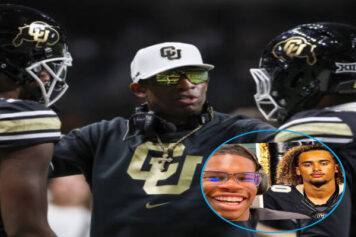This April will mark 25 years since the not guilty verdict of the officers who beat Rodney King and the acquittal of the Korean store owner who shot Latasha Harlins.
In 1991, Rodney King was pulled from the car and viciously beaten by four police officers, resulting in multiple broken bones and injuries that would require reconstructive surgery. Unfortunately, it is now commonplace to witness police brutality caught on tape or a cellphone.
Saturday marks the 25th anniversary of the acquittal of cops who assaulted Rodney King the sad reality is not much has changed since then. pic.twitter.com/MlzeKV3iPB
The Shadow League (@ShadowLeagueTSL) April 27, 2017
But the brutality suffered by Rodney King was one of the first times that an incident was caught on video and broadcast worldwide via the media. Despite the tape showing that King had been struck over 50 times, many blows occurring while he was laying or kneeling on the ground, the trial ended in not guilty verdicts for all four officers.
Latasha Harlins was a 15-year-old Black girl who was wrongly accused of stealing orange juice by Soon Ja Du, a female Korean store owner. After an altercation, Harlins turned to leave and was shot in the back of the head by Du. The jury found Du guilty of voluntary manslaughter, and recommended the maximum sentence of 16 years in prison. However, the judge stated that she knew a criminal when she saw one and, instead, imposed a sentence of probation, community service, and a $500 fine.
What was seen by many as a lack of justice in these two court cases, despite the video evidence, led to the 1992 Los Angeles riots. The riots lasted over several days at the end of April and beginning of May in 1992 and resulted in dozens of deaths, hundreds of injuries, and millions of dollars of property damages.
The Los Angeles riots of 1992 are examined in several upcoming documentaries. I had the opportunity to see the National Geographic documentary entitled LA 92 at the Tribeca Film Festival and found it very informative.
This documentary relied wholly on archival footage without narration. One was immersed in the story told by images on the screen. Interviews of those involved, perhaps a jury member, a prosecutor or defense attorney, or family members of the victims, would have added to the story. However, the movie was very powerful.
Although I remember the King case vividly, having been in law school during the trial, I didnt know the story of Latasha Harlins well. The documentary explored the role of the Korean American community in that section of Los Angeles and the heightened tensions because of the death of Harlins.
There was also a very poignant moment when an older Black store owner pleaded with those in the area. His store had been damaged during the riots and he was distraught that his own community had not respected his existence as someone who was struggling right along with them.
I look forward to viewing the other documentaries on the 1992 Los Angeles riots. Of course, because of the technology back then, much will be duplicated. Theres only so much archival footage to share. Ill be interested in the distinctions between the retellings.
While we have come a long way with respect to technology and now are able to immediately capture and broadcast state-sanctioned violence, what hasnt changed is the existence of that violence. All too often, there is yet another hashtag on social media of the name of someone harmed or killed at the hands of the police. Now we can document injustice in ways that we have not be able to before.
However, we have seen little, if any, progress with respect to the justice system holding law enforcement officials accountable, even when video evidence is presented. As was asked 25 years ago, if a video isnt enough, what more will it take? The technology has improved but, in so many cases, we are still searching for justice.



